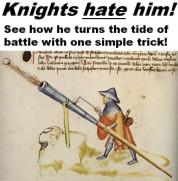I was watching an episode of MythBusters where they were doing myths suggested by fans. One they decided to do wasn’t so much a myth as simply a question. The guy noted that it took quite a bit more time and effort to make a stone tip for an arrow, compared to simply sharpening the wood at the tip of the arrow. His question was, “was it worth the extra effort, and if so why?” In typical MythBusters fashion, they set up some test and came up with what I considered some surprising results.
The first test was for penetration. They shot into a block of ballistic gel covered with a fur hide. They only gained about an inch of penetration with the flaked stone tip as compared to sharpened wood.
They then tested for accuracy and found virtually no difference.
Adam did notice that the stone tip made a substantially bigger wound and hypothesized that the animal would bleed out faster. From what I could see, the wound made by the stone tip was more than 3 times wider in one direction and the same width in the other direction as the wound made by the sharpened stick. In my mind, they question had been answered.
But Jamie discounted that as a significant gain and they continued researching. I don’t think they ever came up with an answer they liked.
I even found a blog by an archaeologists Julien Riel-Salvatore who concured with their findings and suggested that the flintknapping served more of a social status function that a utilitarian purpose.
Frankly I’m surprised. To me, it seems obvious that a wound 3 times the volume per inch of penetration, with an added inch thrown in for good measure, would greatly increase the lethality.
Fortunately for me, I know just the group of folks to ask.



 Reply With Quote
Reply With Quote







